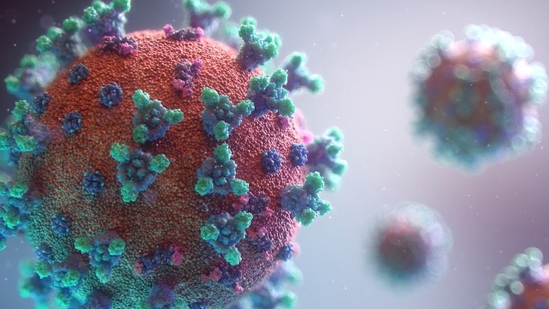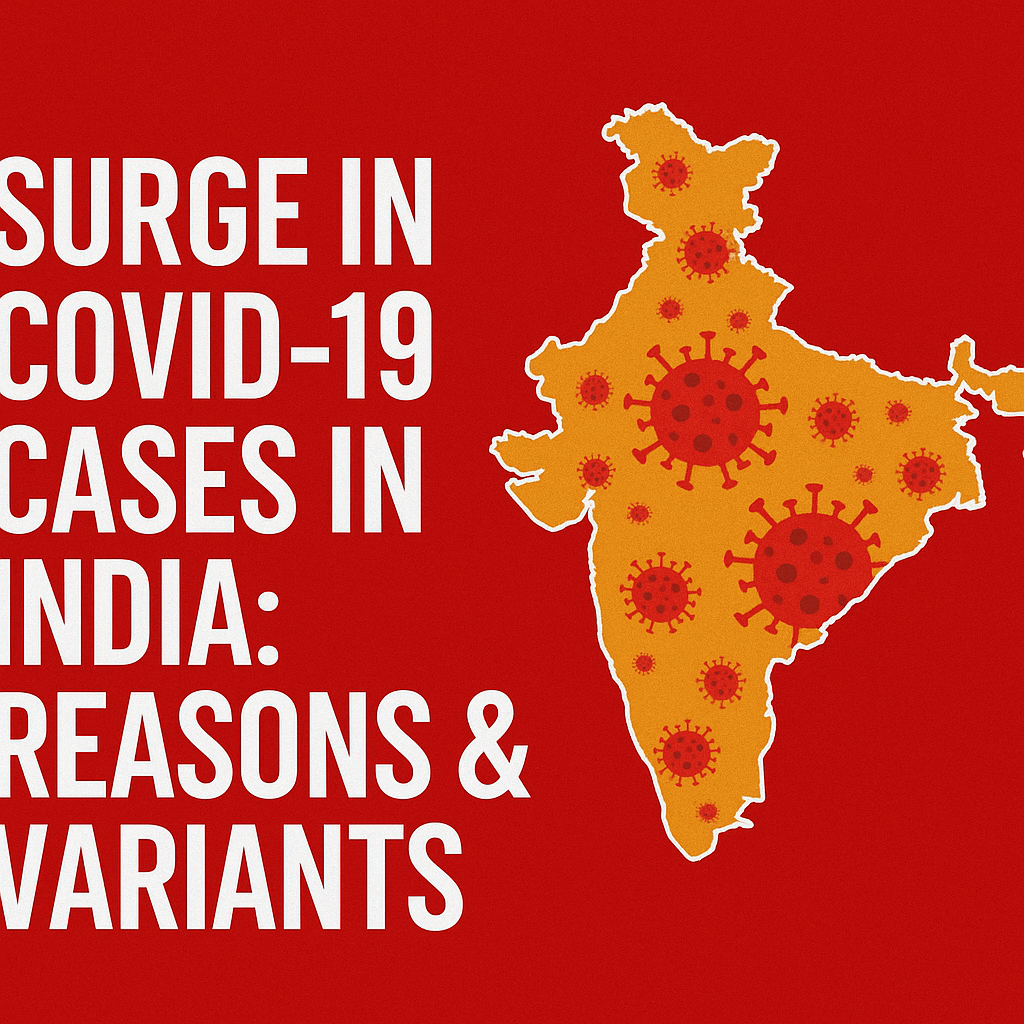
India, after months of relative calm in the battle against COVID-19, is facing a sudden and unexpected spike in coronavirus cases that is drawing the attention of health officials, scientists, and the public alike. This resurgence has raised urgent questions: Why are cases increasing so suddenly? What role do emerging variants play? And how prepared is the nation to handle another potential wave? This comprehensive analysis dives deep into these questions, examining the complex interplay of factors behind the new rise in infections and the road forward.
The Sudden Upsurge: Understanding the Data and Its Implications
The recent rise in COVID-19 cases is not just a statistical blip; it represents a significant epidemiological shift. After months of declining numbers, several Indian states—especially urban hubs like Delhi, Mumbai, and Bengaluru—have reported increased daily infections. This trend is supported by hospital admission data and the increasing positivity rate in testing centers.
Experts are cautious but concerned. Even though many of these new cases are reportedly mild or asymptomatic, the rapid increase in infections could lead to higher numbers of severe cases, especially among vulnerable populations such as the elderly and immunocompromised individuals.
The sudden spike is alarming because it threatens to reverse the hard-won progress India made in controlling earlier waves, including the devastating Delta wave of 2021. The healthcare system, while strengthened, remains under strain, and any significant increase in hospitalizations could quickly overwhelm resources.
Health authorities stress the importance of closely monitoring case trends over the coming weeks. Timely interventions could prevent a full-blown crisis, but the window for action is narrowing as the virus spreads rapidly in certain pockets.
The Role of New Variants in the Resurgence
A major factor fueling the current surge is the emergence of new COVID-19 variants. SARS-CoV-2, like all viruses, mutates over time. Most mutations are benign, but some confer advantages like increased transmissibility or partial immune evasion.
Indian scientists and genomic surveillance teams have identified several concerning variants in circulation, including sub-lineages of Omicron with mutations that potentially make them more contagious. These variants have the ability to spread quickly even among vaccinated populations, though vaccination still largely protects against severe disease.
The spike protein, which allows the virus to enter human cells, is a hotspot for mutations. Variants with changes here may partially escape immune defenses built from vaccination or prior infection, resulting in more breakthrough infections and reinfections.
Genomic sequencing efforts in India have increased significantly, providing critical data to track these variants. However, challenges remain in sequencing capacity and rapid dissemination of findings. Improved surveillance is vital for early detection of any variant with dangerous properties.
The presence of new variants means that India cannot rely solely on earlier immunity and must maintain vigilance, updating vaccine strategies and public health policies accordingly.
Waning Immunity and the Importance of Booster Shots
Vaccination has been the cornerstone of India’s COVID-19 response, with more than 1.5 billion doses administered to date. This achievement has dramatically reduced deaths and severe illness compared to previous waves. However, immunity—whether from vaccines or natural infection—wanes over time.
Several studies worldwide show that protection against infection decreases after several months, especially against newer variants. This waning immunity leaves individuals susceptible to reinfection and mild or moderate disease.
To combat this, health authorities recommend booster doses to “top-up” immunity. Booster shots have been shown to restore and enhance protection, particularly in the elderly, healthcare workers, and other high-risk groups.
India has accelerated its booster rollout, but coverage remains uneven, especially in rural and underserved regions. Vaccine hesitancy, logistical challenges, and misinformation hinder booster uptake.
Increasing booster coverage is critical to building community immunity that can slow viral spread and reduce severe outcomes. Alongside this, ongoing development of variant-specific vaccines and next-generation shots promises improved defense against evolving strains.
The Impact of Pandemic Fatigue and Behavioral Changes
After more than two years of living under various restrictions, mask mandates, and social distancing, pandemic fatigue has set in across India. People are understandably eager to return to normal life, socialize, and celebrate festivals and events without fear.
However, this fatigue has led to a relaxation of COVID-appropriate behavior in many places. Mask usage has declined, especially in outdoor and indoor crowded settings. Large gatherings, weddings, political rallies, and religious festivals have resumed at pre-pandemic scale, often without adequate precautions.
This change in behavior creates fertile ground for the virus to spread. Even the highly vaccinated population remains vulnerable to infection, particularly with more transmissible variants.
Health experts warn that complacency could undo the gains made by vaccination and previous lockdowns. They emphasize the need for continued vigilance, especially in public spaces and high-risk environments.
Effective public messaging, community engagement, and enforcement of protocols are essential to curb the spread while balancing social and economic needs.
Healthcare System Preparedness Amid Rising Cases
India’s healthcare system endured tremendous pressure during the second wave in 2021, and while it has improved since then, it remains vulnerable. The current increase in cases risks stretching resources once again.
Hospitals in metropolitan areas report rising patient admissions, primarily mild cases, but some requiring oxygen support and intensive care. Testing labs face increased demand, occasionally leading to delays.
To prepare, state governments are activating contingency plans: increasing hospital beds, securing oxygen and medicine supplies, and recruiting healthcare workers. Mental health support for medical staff is also being prioritized to address burnout.
Contact tracing and quarantine protocols are being reinforced to contain clusters early. The government is also pushing telemedicine and home isolation support for mild cases to reduce hospital load.
However, rural and remote areas remain at risk due to limited healthcare infrastructure, making early detection and intervention challenging.
Government Response and Policy Adaptations

In light of the rising numbers, various states have reinstated mask mandates and restrictions on large gatherings. Some have introduced night curfews or limited indoor events.
The central government is coordinating with states to monitor the situation closely, sharing data and best practices. Guidelines for travel, quarantine, and testing are under periodic review.
Public health campaigns have intensified, focusing on booster vaccination drives and encouraging adherence to COVID-appropriate behavior.
The government is also working with international agencies to track emerging variants and share research findings. This collaboration helps India stay ahead of potential threats and refine response strategies.
Policy flexibility is key, as the evolving nature of the virus requires rapid adjustments based on data and scientific insights.
The Social and Economic Consequences
The resurgence of COVID-19 cases is not only a public health issue but also carries significant social and economic implications.
Fear of infection can disrupt workplaces, schools, and transportation systems. Economic activities might slow down again if restrictions are tightened, affecting livelihoods and growth.
Moreover, misinformation and stigma related to COVID-19 persist, complicating efforts to promote testing and vaccination.
Addressing these challenges requires comprehensive strategies that integrate health, social support, and economic recovery.
Communities, businesses, and governments must collaborate to maintain resilience and minimize disruption.
Lessons Learned and the Path Forward
India’s experience with COVID-19 so far offers important lessons:
- Vaccination saves lives but is not a silver bullet; ongoing prevention measures remain vital.
- Genomic surveillance is crucial for early detection of dangerous variants.
- Public cooperation and clear communication are as important as medical interventions.
- Equitable healthcare access must be prioritized to protect all populations.
Looking ahead, India must sustain and deepen vaccination efforts, including boosters and pediatric vaccinations, while reinforcing public health infrastructure.
Innovations in diagnostics, treatments, and vaccines should be rapidly adopted.
Importantly, society must embrace a long-term mindset toward COVID-19, recognizing it may become endemic but controllable with the right strategies.
The Role of Science and Technology
Science and technology have played an unprecedented role in India’s fight against COVID-19.
The rapid development and deployment of vaccines, enhanced genomic sequencing capacity, and digital tools for tracking cases and vaccination have been game changers.
Ongoing research into variant evolution, vaccine effectiveness, and therapeutics continues to inform policy and clinical practice.
Investment in public health infrastructure, laboratories, and digital health systems will strengthen India’s preparedness for this and future pandemics.
Community Involvement and Public Health Messaging
Community engagement remains fundamental. Trusted voices at the local level, including community leaders, healthcare workers, and influencers, can encourage vaccination and preventive practices.
Public health messaging must be clear, consistent, and culturally sensitive to counter misinformation and encourage responsible behavior.
Schools, workplaces, and religious institutions are critical partners in disseminating information and implementing safety protocols.
Global Context and India’s Position
India’s current surge is part of a global pattern of COVID-19 outbreaks driven by new variants and changes in immunity and behavior.
International cooperation, sharing of data, vaccines, and therapeutics is essential to manage the pandemic globally.
India, as a major vaccine producer and a populous nation, plays a key role in global health security.
Continued vigilance and adaptation will help India navigate this next phase while contributing to global efforts.
Conclusion: A Collective Responsibility
The sudden rise in COVID-19 cases in India is a call to action for all stakeholders—from policymakers and healthcare providers to individual citizens.
Through vaccination, adherence to safety measures, robust surveillance, and scientific innovation, India can contain this surge and prevent further waves.
Pandemic fatigue is understandable, but the stakes remain high. The lessons of the past two years underscore the importance of unity, resilience, and compassion.
Together, India can face the ongoing challenge of COVID-19 and emerge stronger, healthier, and more prepared for the future.

